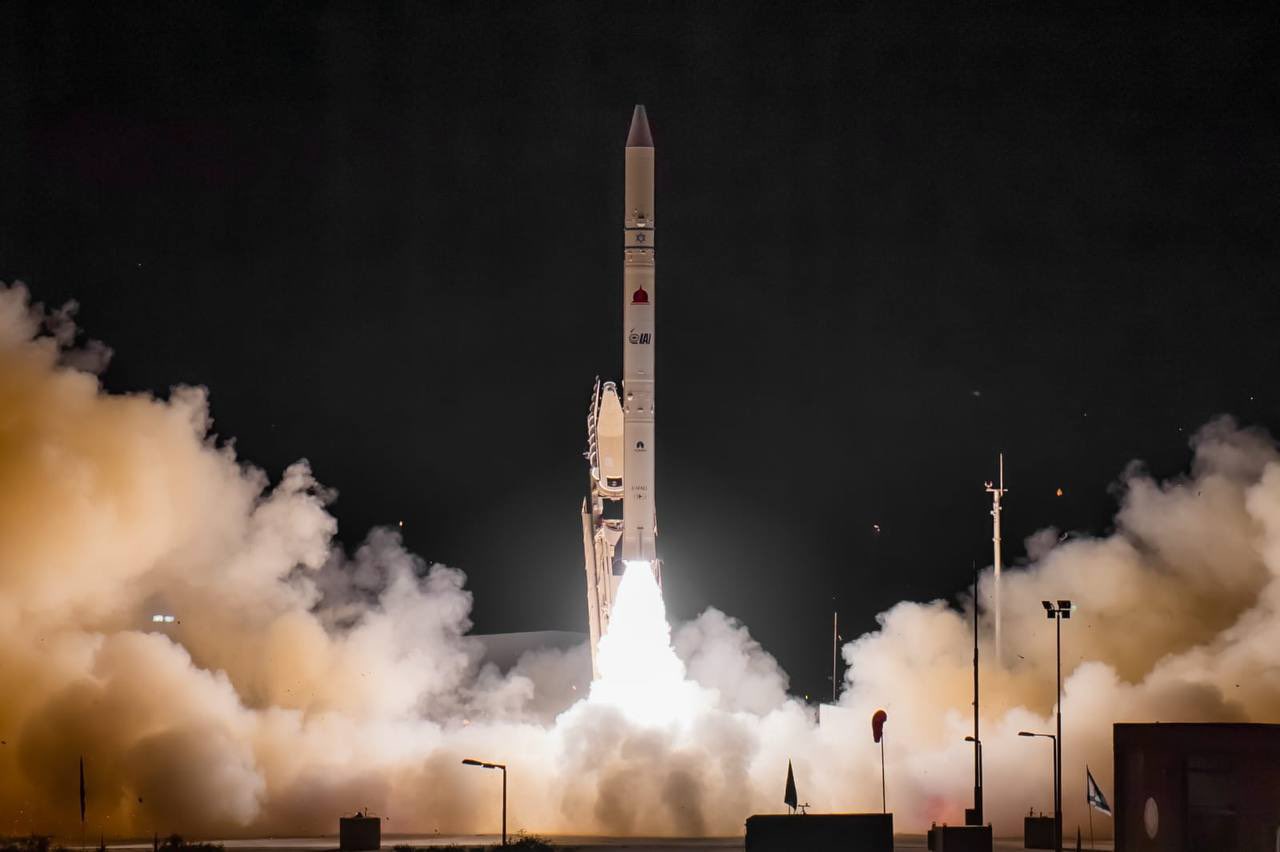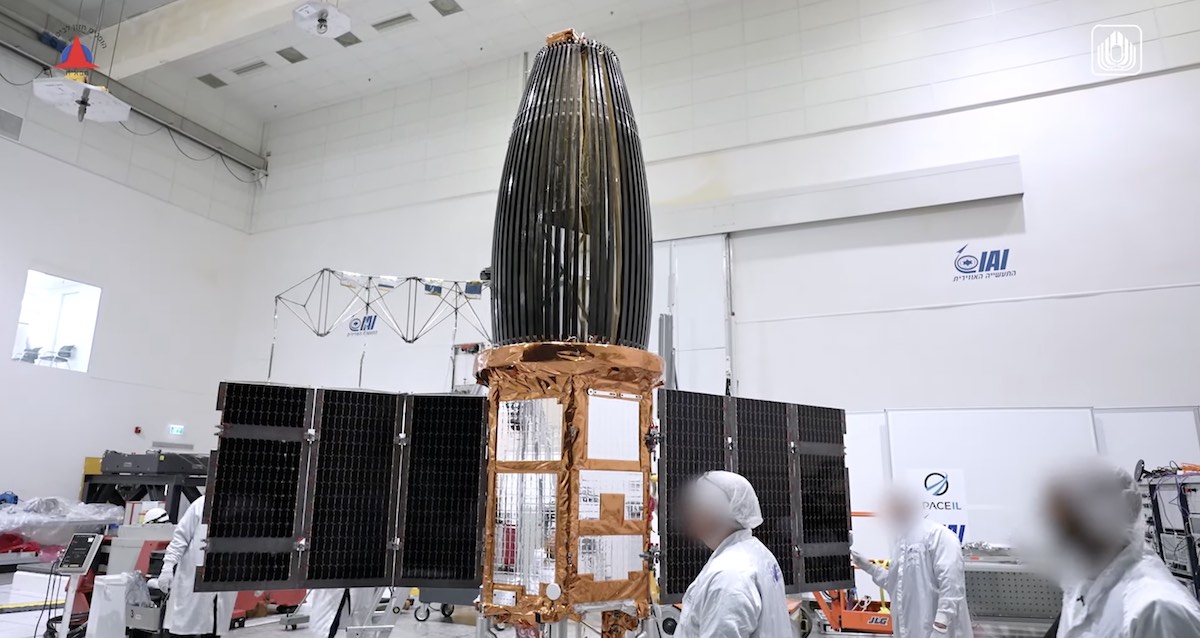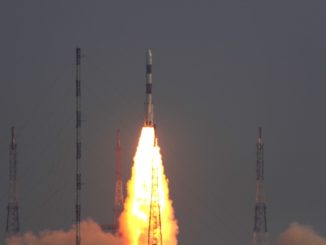
Israel’s military launched a radar spy satellite March 28 from an air base south of Tel Aviv, adding an all-weather observation sentinel to the country’s fleet of intelligence-gathering spacecraft.
A solid-fueled Shavit 2 launcher delivered the Ofek 13 spy satellite into a retrograde orbit after heading west from the Palmachim test range. The three-stage rocket flew over the Mediterranean Sea, accelerating against the direction of Earth’s rotation to avoid soaring above densely populated areas and dropping spent rocket casings stages on land.
Israel’s Ministry of Defense reported the Shavit 2 rocket lifted off from the Palmachim air base at 2310 UTC (7:10 p.m. EDT) on March 28, or 2:10 a.m. local time March 29. Israeli officials did not announce the launch ahead of time, keeping with long-standing secrecy about the country’s military spy satellite program.
After firings by the Shavit 2’s first and second stage motors, the rocket coasted to the proper altitude for injection of the Ofek 13 satellite into orbit. The Shavit 2’s upper stage spun up to stabilize the rocket during the third stage burn, which accelerated the Ofek 16 satellite to orbital velocity. The orbital parameters were not released by Israeli officials or the U.S. military, but previous Ofek spy satellites have flown in orbits a few hundred miles above Earth with inclinations of about 141 degrees to the equator.
“The Ofek 13 satellite is a radar observation satellite with advanced capabilities, with the ability to photograph in dark and cloudy conditions,” Israel’s Defense Ministry said in a statement. “Upon entering orbit around the Earth, the satellite will undergo a series of tests designed to verify its integrity and level of performance.”
The satellite was built by Israel Aerospace Industries, and the Shavit 2 launcher is powered by solid-fueled motors produced by Tomer and Rafael, both Israeli defense contractors. IAI is the lead contractor overseeing the Shavit rocket program, which has accomplished 12 orbital launch attempts since 1988, with 10 successful flights. The Shavit rocket was derived from Israeli’s Jericho ballistic missile.
Ofek means “horizon” in Hebrew, while Shavit translates to “comet.”
Before the March 28 launch, Israel’s most recent domestic satellite launch occurred in July 2020. A commercially-owned, Israeli-built optical Earth-imaging satellite launched from California in December on a SpaceX Falcon 9 rocket. That satellite, owned by ImageSat International and built by IAI, will collect imagery for use by the Israeli government.
“The successful launch of the satellite is yet another important example of the Israeli defense establishment’s groundbreaking innovation,” said Yoav Galant, Israel’s defense minister. “Israel has already proved its diverse space capabilities many times and is one of very few countries to possess such capabilities — capabilities that we continue to develop and strengthen.
“We will continue to prove that even the sky isn’t the limit for the Israeli defense establishment and that we continue to enhance its capabilities in every dimension in the face of various challenges,” Galant said in a statement.
The Israel Defense Forces’ secretive Unit 9900 is also involved in the Ofek spy satellite program. Unit 9900 is responsible for collecting airborne and satellite imagery for visual overhead intelligence.
Israel’s Defense Ministry said the Ofek 13 satellite began transmitting telemetry data to ground teams after entering orbit, confirming its health immediately following launch.

“Ofek 13 is a SAR (synthetic aperture radar) satellite with the most advanced capabilities of its kind, entirely developed in Israel,” said Avi Berger, head of the Israeli Ministry of Defense space and satellite administration. “The launch was successful, according to plan. Initial indications from the satellite are also very good. Within the coming weeks, we will complete technical tests and receive the first pictures before delivering the satellite for operational use by the IDF.”
The satellite will unfurl its radar antenna reflector before commencing regular operations. The mesh-like reflector was folded up for launch to fit inside the payload fairing of the Shavit 2 rocket.
“Ofek 13 will join the additional Ofek satellites that the Ministry of Defense and the IDF have operated in space for many years,” Berger said in a statement. “A SAR satellite will allow, among other things, day and nighttime imaging capabilities, and will drastically improve Israel’s intelligence capabilities from space for years to come.”
Email the author.
Follow Stephen Clark on Twitter: @StephenClark1.



